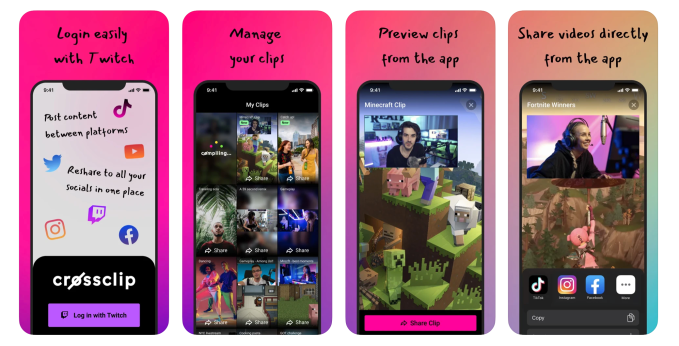- July 15, 2021
- by:
- in: Blog
Aurora Innovation, the autonomous vehicle startup that acquired Uber’s self-driving unit in December, is going public via a merger with special purpose acquisition company Reinvent Technology Partners Y. The deal announced Thursday confirms TechCrunch’s reporting in June that the startup was in final talks with the SPAC launched by LinkedIn co-founder and investor Reid Hoffman,
Aurora Innovation, the autonomous vehicle startup that acquired Uber’s self-driving unit in December, is going public via a merger with special purpose acquisition company Reinvent Technology Partners Y.
The deal announced Thursday confirms TechCrunch’s reporting in June that the startup was in final talks with the SPAC launched by LinkedIn co-founder and investor Reid Hoffman, Zynga founder Mark Pincus and managing partner Michael Thompson.
The combined company, which is will be listed on Nasdaq with the ticker symbol AUR, will have an implied valuation of $13 billion. Aurora was last valued at $10 billion following its acquisition of Uber’s self-driving unit.
Through the deal, Aurora is capturing $1 billion from private investors including Baillie Gifford, funds and accounts managed by Counterpoint Global (Morgan Stanley), funds and accounts advised by T. Rowe Price Associates, Inc., PRIMECAP Management Company, Reinvent Capital, XN, Fidelity Management and Research LLC, Canada Pension Plan Investment Board, Index Ventures, and Sequoia Capital, as well as strategic investments from Uber, PACCAR, and Volvo Group.
The combined company said it’s expected to have about $2.5 billion in cash at closing, including up to $977.5 million of cash held in Reinvent’s trust account from its initial public offering which closed on March 18, 2021, according to regulatory filings.
“This is a big next step for the company,” CEO and co-founder Chris Urmson said in an interview Thursday. “Obviously we need to bring our product to the market, but we really couldn’t be more excited for our team, the resources this transaction brings and our partners.”
Aurora has gone from buzzy startup to publicly traded company-via-SPAC in a span of four years. The company was founded in 2017 by Sterling Anderson, Drew Bagnell and Urmson, all whom have a history of working on automated vehicle technology.
In December, the company reached an agreement with Uber to buy the ride-hailing firm’s self-driving unit in a complex deal that valued the combined company at $10 billion. Under the terms of that acquisition, Aurora did not pay cash for Uber ATG, a company that was valued at $7.25 billion following a $1 billion investment in 2019 from Toyota, DENSO and SoftBank’s Vision Fund. Instead, Uber handed over its equity in ATG and invested $400 million into Aurora. Uber received a 26% stake in the combined company, according to a filing with the U.S. Securities and Exchange Commission.
Since the acquisition, Aurora has spent the past several months integrating Uber ATG employees and now has a workforce of about 1,600 people. Aurora more recently said it reached an agreement with Volvo to jointly develop autonomous semi-trucks for North America. That partnership, which is expected to last several years and is through Volvo’s Autonomous Solutions unit, will focus on developing and deploying trucks built to operate autonomously on highways between hubs for Volvo customers.
Venture capital at scale
Hoffman, Pincus and Thompson have promoted a concept that they call “venture capital at scale.” To date, SPACs have been the conduit to reach that scale. The trio have formed three SPACs, or blank-check companies.
Two of those SPACs have announced mergers with private companies. Reinvent Technology Partners announced a deal in February to merge with the electric vertical take off and landing company Joby Aviation, which will be listed on the New York Stock Exchange later this year. Reinvent Technology Partners Z merged with home insurance startup Hippo.
Their third SPAC — the one now merging with Aurora — is called Reinvent Technology Partners Y, priced its initial public offering of 85 million units at $10 per unit to raise $850 million. The SPAC issued an additional 12.7 million shares to cover over allotments with total gross proceeds of $977 million, according to regulatory filings. The units are listed on the Nasdaq exchange and trade under the ticker symbol “RTPYU.”
In many ways, the Aurora-Reinvent SPAC is a union that makes sense.
Aurora already has a relationship with Hoffman. In February 2018, Aurora raised $90 million from Greylock Partners and Index Ventures. Hoffman, who is a partner at Greylock, and Index Ventures’ Mike Volpi became board members of Aurora as part of the Series A round. The following year, Aurora raised more than $530 million in a Series B round led by Sequoia Capital and included Amazon and T. Rowe Price Associates. Lightspeed Venture Partners, Geodesic, Shell Ventures and Reinvent Capital also participated in the round, as well as previous investors Greylock and Index Ventures.
Hoffman and Reinvent showing up on two sides of a SPAC deal is not unprecedented. It’s not commonplace either. Urmson told TechCrunch that to avoid potential conflicts of interest Hoffman didn’t particpate in discussions
“On the one hand, Reid, given his understanding and history with the company, is one of the people best suited to understand the opportunity here,” Urmson said in an interview Thursday morning, adding that to avoid a conflict of interest on both sides Hoffman wasn’t involved in any discussions on the Aurora or Reinveint side.
This story is developing.







